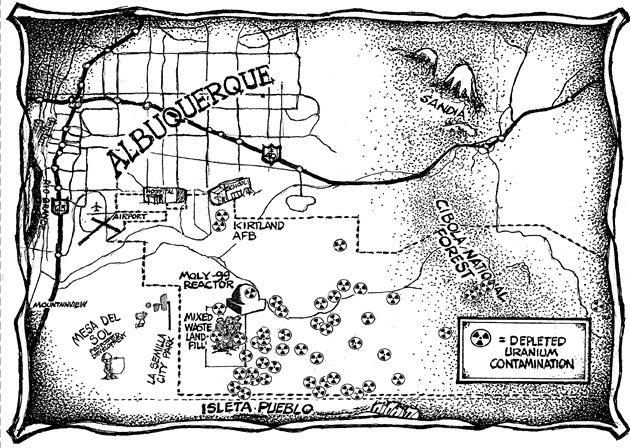
Committee to Minimize Toxic Waste
The Committee to Minimize Toxic Waste is one of 39 environmental and peace organizations that won a landmark lawsuit against the U.S Department of Energy for failure to follow-through on adequate environmental cleanup during its 50+ years of nuclear weapons research, testing, and production. Part of this settlement was the establishment of the MTA Fund (Citizens’ Monitoring and Technical Assessment Fund), which provided $6.25 million for tribes and non-profit organizations to assess and conduct independent technical and scientific studies regarding the multitude of technical, ecological, and health issues surrounding the nation’s nuclear weapons complex.
Clark University was chosen by the non-profit peace and environmental groups as the conservator of these reports to ensure they remain available to the public in perpetuity. The unconventional election of university as conservator is an innovative example, particularly within the era of Web 1.0, of higher education as protector and provider of information through wide dissemination.
The research and reports available in this series were conducted by the Committee to Minimize Toxic Waste with their allocated portion of the MTA fund.
If you have any questions or concerns please contact us at digitalrepository@clarku.edu.
-

Environmental Monitoring of Present and Reconstruction of Past Tritium Emissions from the National Tritium Labeling Facility at the Lawrence Berkeley National Laboratory, California
Committee to Minimize Toxic Waste, Roger Byrne, and Pamela Sihvola
The National Tritium Labeling Facility (NTLF) was located on the eastern edge of the Lawrence Berkeley National Laboratory (LBNL) in Building 75. Just to the north of the NTLF is the Lawrence Hall of Science, a popular children's science museum that is visited by thousands of children every year.
The research effort reported on here has three primary objectives: 1) to monitor tritium activity levels in rainfall near the Lawrence Hall of Science, and creeks draining the watersheds close to the NTLF stack; 2) to date wood samples from Eucalyptus trees growing between the NTLF stack and the Lawrence Hall of Science; and, 3) to determine the organically bound tritium content of the dated samples as a means of reconstructing tritium emissions from the NTLF stack. These three objectives are covered in Part A, Part B, and Part C of this report.
This research was completed money allocated during Round 1 of the Citizens’ Monitoring and Technical Assessment Fund (MTA Fund). Clark University was named conservator of these works.
If you have any questions or concerns please contact us at digitalrepository@clarku.edu
-

Contaminant Plumes of the Lawrence Berkeley National Laboratory and their Interrelation to Faults, Landslides, and Streams in Strawberry Canyon, Berkeley and Oakland, California
Committee to Minimize Toxic Waste and Laurel Collins
The Lawrence Berkeley National Laboratory (LBNL), initially called the UC Radiation Laboratory, was originally located on the University of California Berkeley (UCB) central campus in Alameda County during 1932. By 1940, it was relocated to its present site in the steep hills of Strawberry Canyon east of the Hayward Fault and the central UCB campus. The first major facility, the 184-inch synchrocyclotron was built with funds from both private and university sources, and was used in the Manhattan Project in the development of the world’s first nuclear bomb. Beginning in 1948 the U.S. Atomic Energy Commission and then its successor agency, the Department of Energy (DOE) funded the lab while it continued to expand its facilities in Strawberry Canyon.
For over 60 years radioactive and chemical releases and accidents have contaminated the once beautiful, pristine watershed of the Strawberry Canyon and nearby wild lands. In 1991 the DOE's Tiger Team assessment found 678 violations of DOE regulations covering management practices at LBNL finding Berkeley-Oakland air, soil, and water contaminated with tritium and other radioactive substances and toxic chemicals.
The report addresses the need to compile and develop publicly accessible maps of Strawberry Canyon, which show the geologic and geomorphic characteristics that might influence ground and surface water movement near known LBNL contaminant sites. The intent of this map compilation project is to show where there is or is not agreement among the various technical reports and scientific interpretations of Strawberry Canyon.
This research was completed money allocated during Round 6 of the Citizens’ Monitoring and Technical Assessment Fund (MTA Fund). Clark University was named conservator of these works.
If you have any questions or concerns please contact us at digitalrepository@clarku.edu


